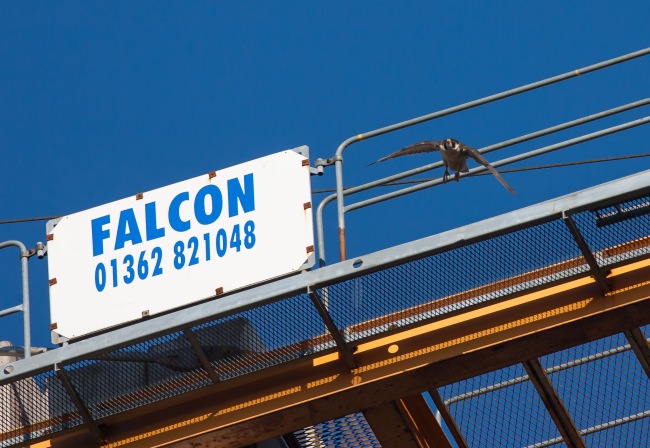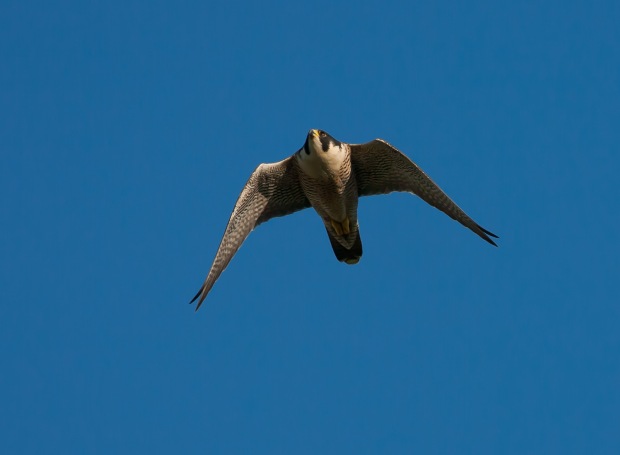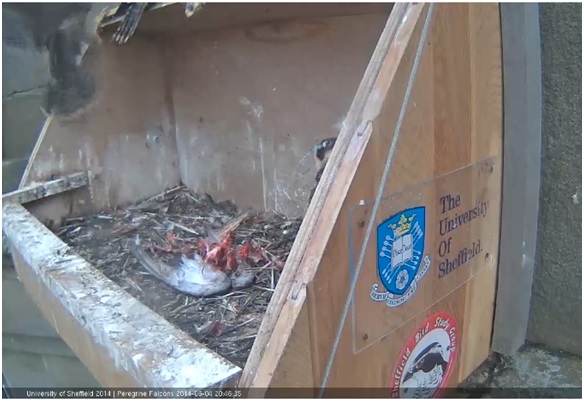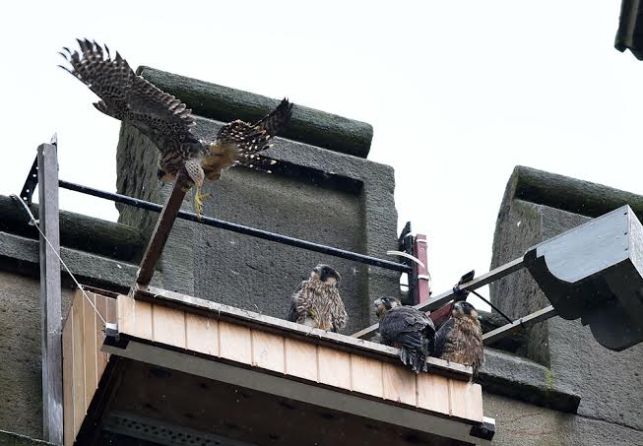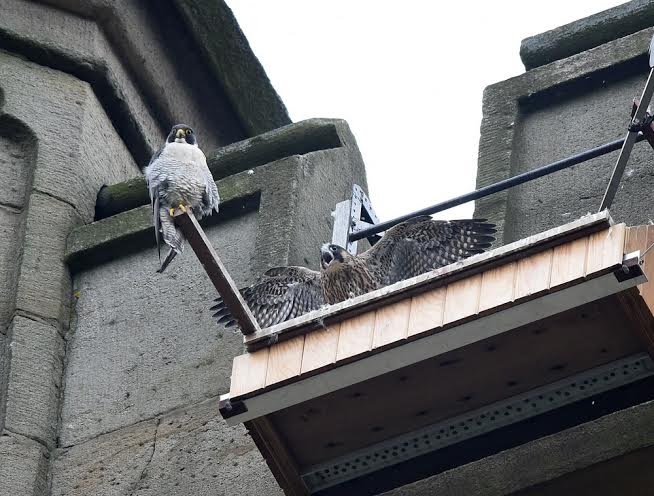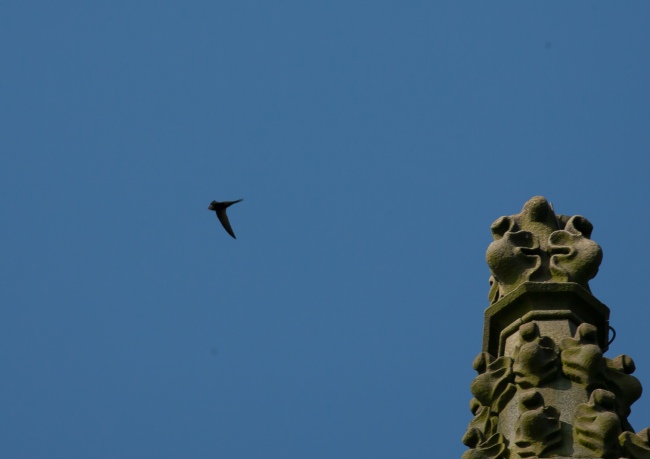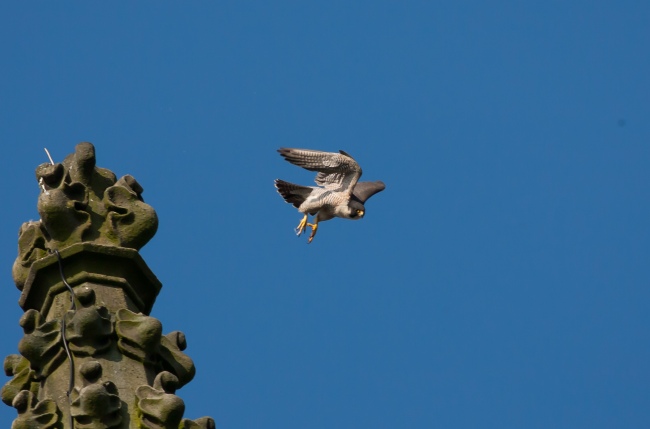It’s been an exciting – and very busy – few days, but a chance finally to update the blog.
Guesstimates of Thursday 5th as a potential date for first flights turned out to be amazingly accurate, and tied in nicely with the watch and public talk that evening. Following a poor day for weather on Wednesday 4th, much better conditions the following day encouraged the young birds to make their first flights, and during the afternoon of Thursday 5th three of them left the nest. One of them landed in a tree in the church grounds, with thanks to Andy J again for another great pic.
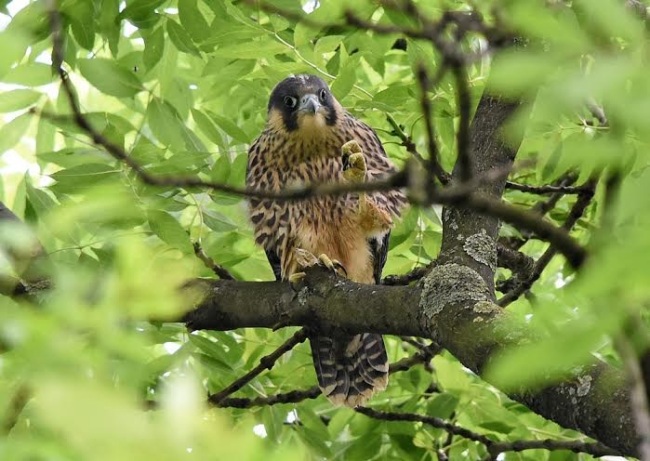
It then flew down onto the ground, where it wandered about until it was captured, taken back up the tower and released.
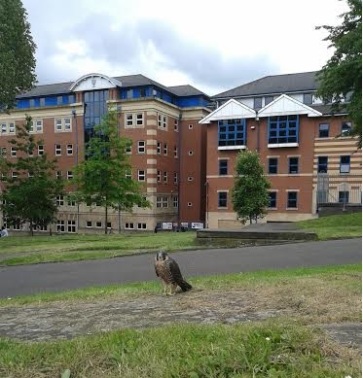
Thanks to Darren, who was on the scene at the time and took the picture above with a phone! All of this very much echoes what happened last year, of course. A second juv was chaperoned on a flight by the female and returned to the tower, landing at the base of one of the vented windows, while a third flopped up over the castellations and disappeared onto the top of the tower. A little later a good crowd gathered for the watch ahead of the talk, and we were treated to some fantastic views as the adults came and went, with the juvs in good view too.
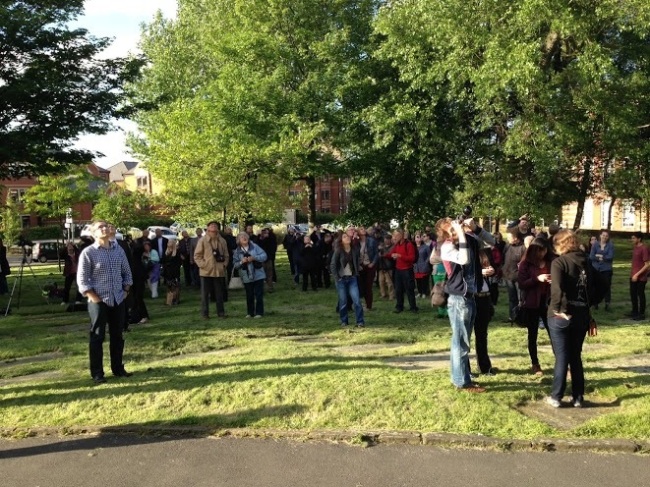
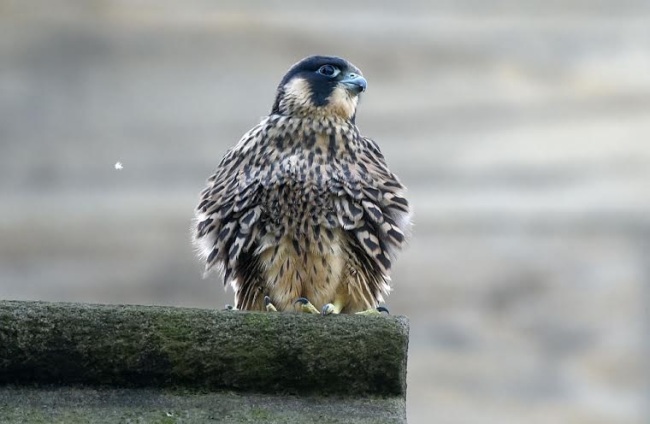
We then moved indoors for the talk, which was enjoyed by about 250 people, with thanks to Jim Lonsdale and Phil Riley for their substantial contributions, both to the talk and to the success of the Peregrine project overall. The response was terrific, and it was great to see plenty of under-20s there: the Q&A could have gone on all night! The numbers present and the many kind comments bring home just how much enjoyment the Peregrines have brought, and it’s been a very satisfying privilege to be involved in it all. Pete Mella, who helps maintain the blog, filmed the talk and will be making it available in due course. While we were inside, Andy J caught the moment one of the young birds decided to head back to the box from the roof of the tower.
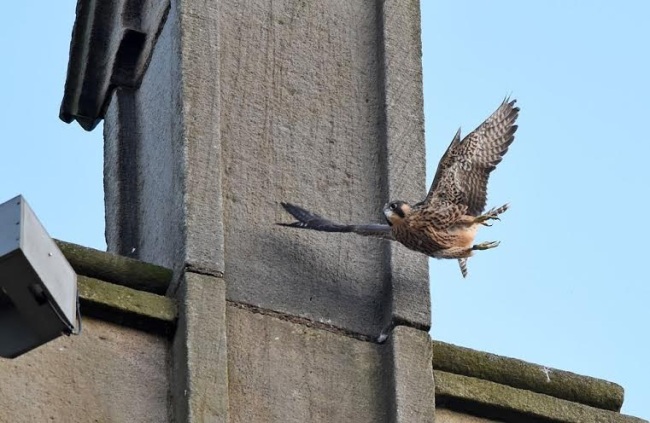
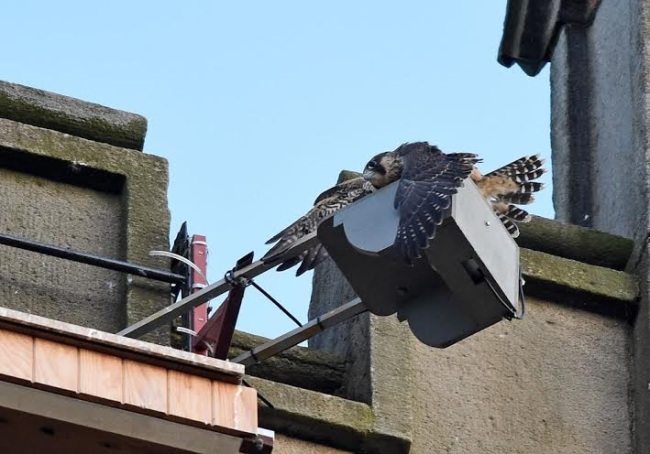
Having gathered itself from the crash landing on the webcam housing, it hopped back into box for the night.
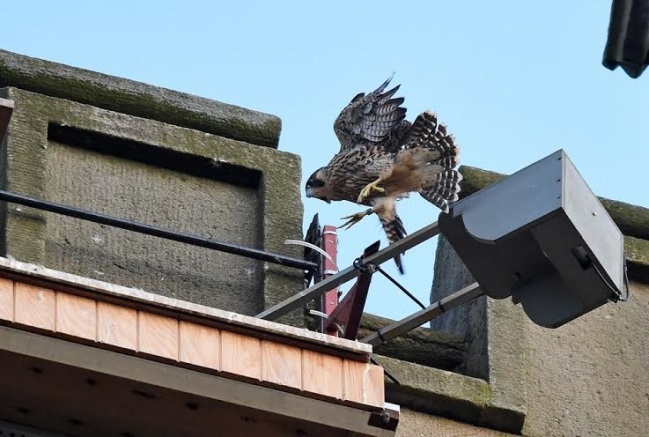
After the talk further great views were to be had back outside as the late evening sun caught the birds beautifully.
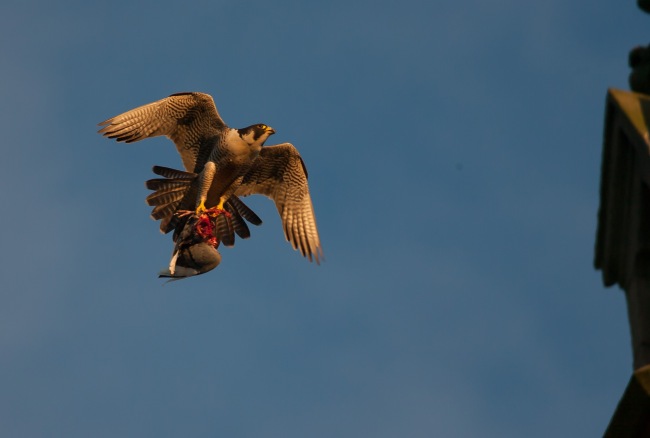
As evening drew in, a chance for an ‘atmospheric’ shot presented itself, as long as you were prepared to stand in the middle of the road to line everything up!
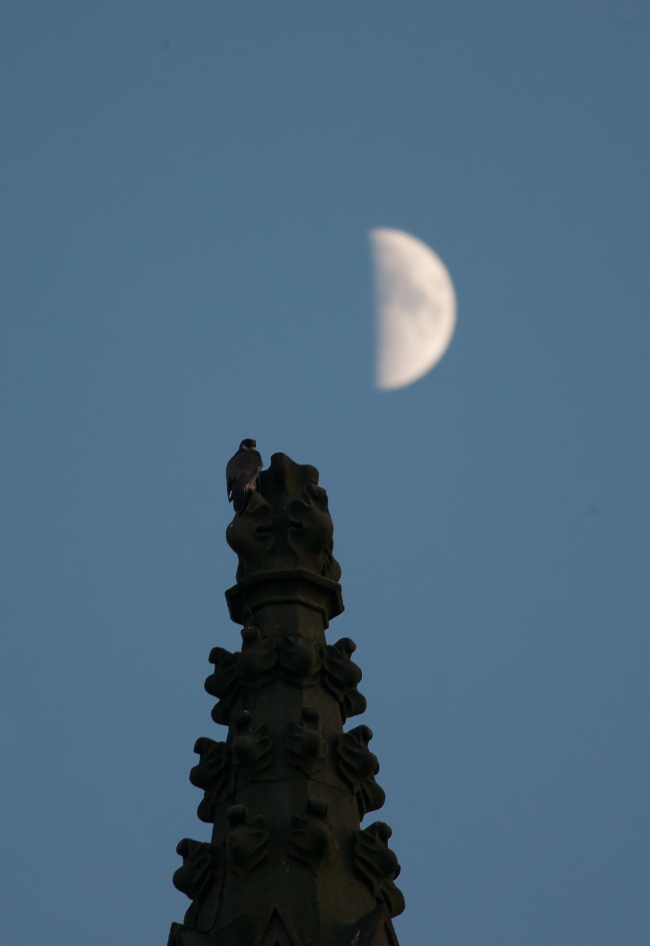
An early visit on Friday 6th saw the female perched up on the crane again, a vantage point with which she clearly identifies.
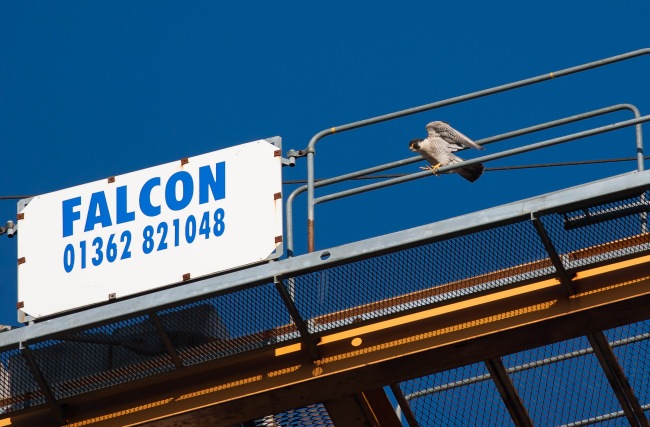
A fair few people have had their eye on this as a picture, but the times the birds have settled in a good spot have been few and far between. During the course of the day on Friday, three of the birds again were away from the nest platform, though one (the smallest of the brood) seems not quite ready to leave, but has been exercising his (?) wings vigorously and will surely take the plunge soon. Another juv had spent the night on the ledge above the clock face lower down the tower and was showing signs of being ready to take to the air again: my caption for this shot is ‘Fledging on time’.
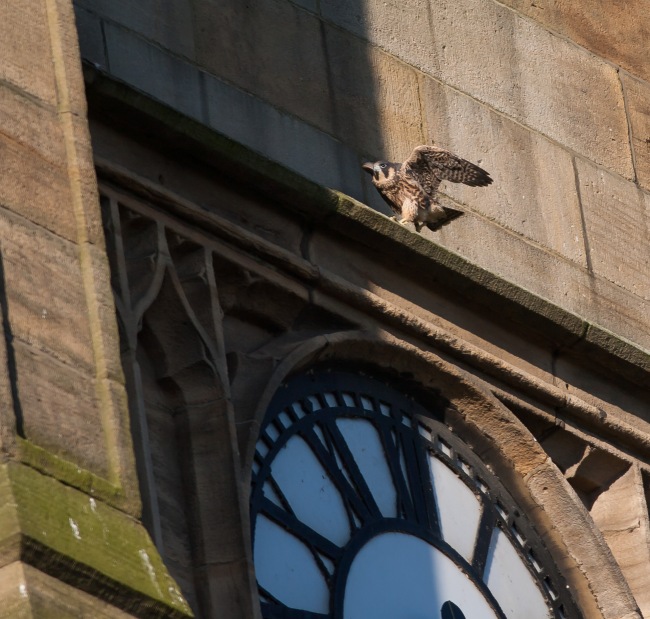
By the evening, two of the juvs were on the box again, one having returned from nearby, while another was on the stonework of the north-facing window. On several occasions one of the adults landed nearby, clearly trying to tempt it to take off from there, but despite much squawking and flapping it stayed in place until dusk. It was very close to going at times though!
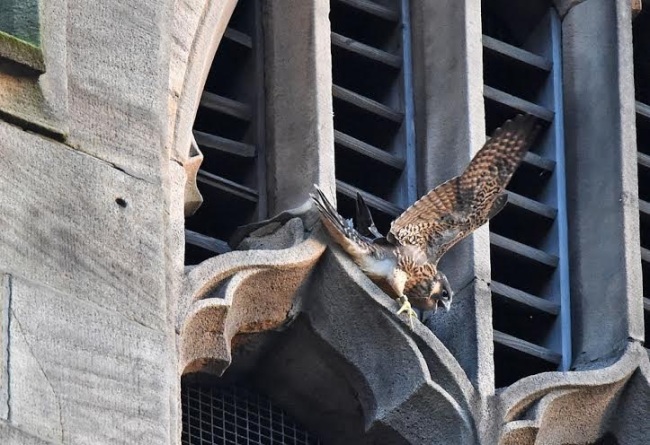
The fourth juv was on the roof of a building towards Mappin Street, where it drew the attention of a local Magpie.
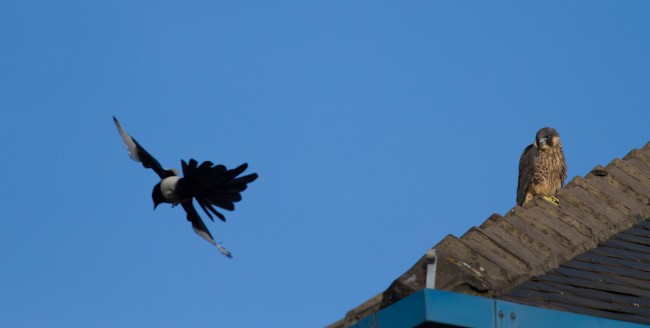
The Magpie never attacked the juv, but was obviously very interested in its presence, approaching to within less than a metre.
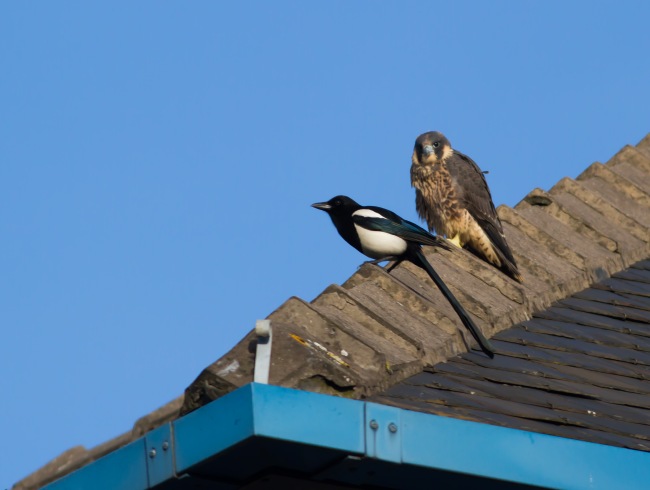
A little later, this juv had disappeared, and extensive searches of rooftops and the ground nearby failed to find it, but just as light was fading it flew in and landed on a ledge below the bird in the window, showing pretty assured flight skills. So the day ended with 6 Peregrines on the church tower: 2 juvs in the box, 2 in the north window and the 2 adults on the stonework too. Two of the juvs certainly slept in the box, though views of the birds via the webcam will become less and less regular.
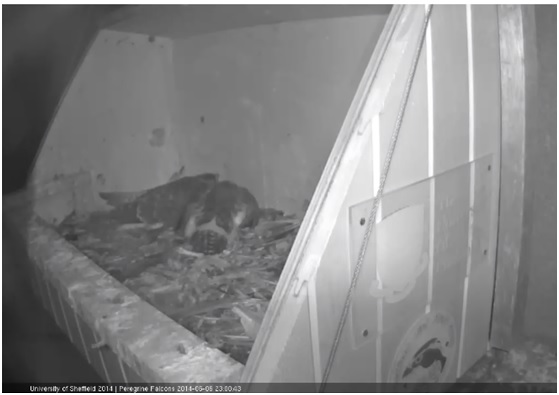
A final point of interest from the evening was the return of the female to the tower after a brief sortie in a very wet and bedraggled state. As the pictures above show, it was a lovely evening, so I can only think she’d been bathing or had unsuccessfully attempted to take something from the water in a nearby park or perhaps even the river Don. This is the first time I’ve seen either of the adults return wet, though Ratcliffe states that Peregrines are known to enjoy bathing in dust and water, a practice that helps to get rid of parasites. Given the condition of the nest, parasites and disease must now constitute a real risk for the young birds, though their regular preening sessions will offer some protection against external parasites at least.
With thundery showers forecast for much of the day, another early visit this morning (Saturday 7th) seemed in order, and revealed that both of the juvs that presumably spent the night in the north window had gone, while the other two remained on or around the box. One of the more adventurous juvs was located on one of the University buildings off Mappin Street, but the fourth couldn’t be found before the rain arrived. Hopefully it’s safe. The adults are certainly keeping tabs on the juvs away from the church, and the female took a recently caught Pigeon to the juv near Mappin Street, ensuring it remains well fed until able to start hunting for itself, which will take a few weeks (at least) to master.
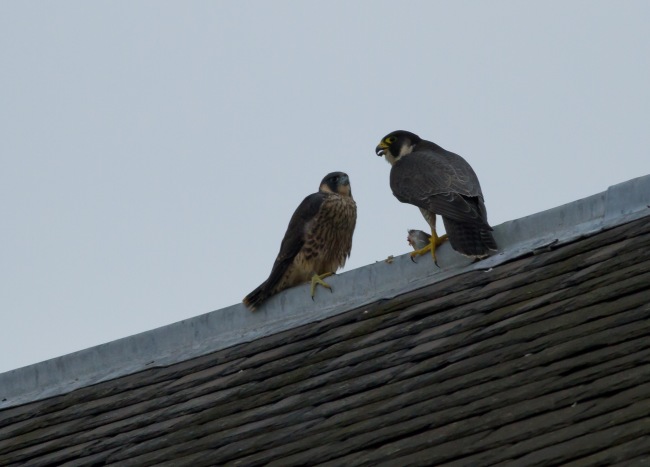
With the young birds starting to range away from the church a little, it’s going to be harder to keep up to date with their movements, though I’ll provide updates of any significant developments. In the meantime, enjoy the webcam views while they’re still available, at least until the fourth juv takes its first flight, and a visit to the site is much recommended for those in the vicinity as there’s always plenty to see.
